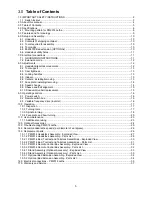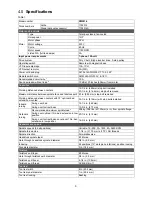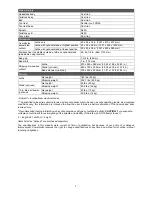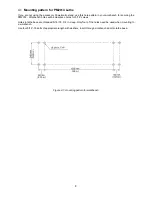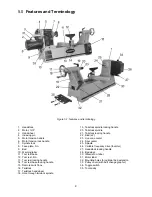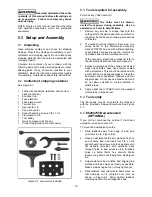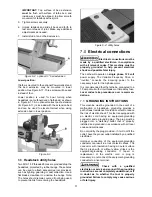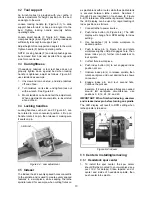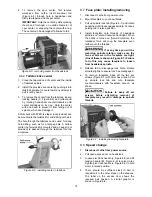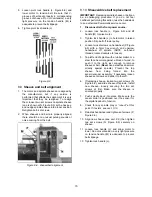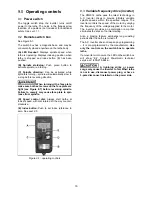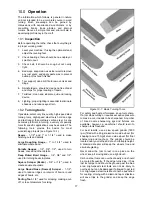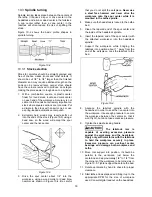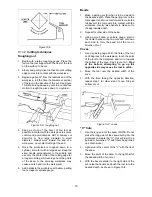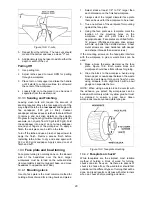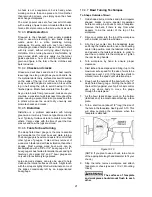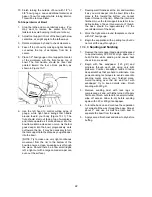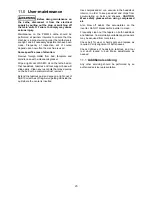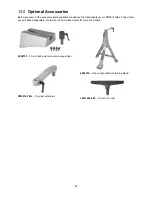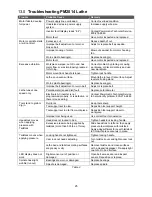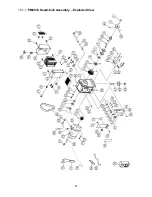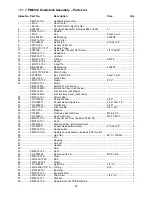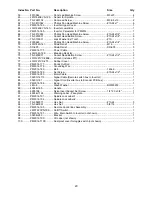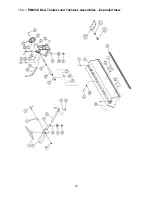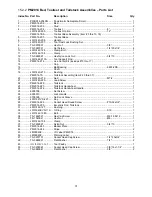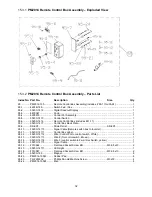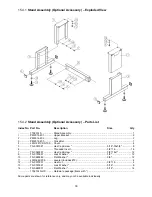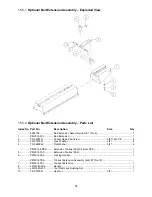
19
Figure 10-5
10.3.2
Cutting techniques
Roughing out
1. Begin with a large roughing gouge. Place the
tool on the tool support with the heel of the tool
on the surface to be cut.
2. Slowly and gently raise tool handle until cutting
edge comes into contact with the workpiece.
3. Beginning about 2” from the tailstock end of the
workpiece, roll the flute (hollowed-out portion)
of the tool in the direction of the cut. See Figure
10-6. Make long sweeping cuts in a continuous
motion to rough the piece down to a cylinder.
Figure 10-6: roughing out
4. Keep as much of the bevel of the tool as
possible in contact with the workpiece to ensure
control and avoid catches. NOTE: Always cut
down-hill, or from large diameter to small
diameter. Always work
toward
the end of a
work-piece, never start cutting at the end.
5. Once the workpiece is roughed down to a
cylinder, smooth it with a large skew. Keep the
skew handle perpendicular to the spindle and
use only the center third of the cutting edge for
a long smoothing cut (touching one of the points
of the skew to the spinning workpiece may
cause a catch and ruin the workpiece).
6. Add details to the workpiece with skew, parting
tool, scraper or spindle gouge.
Beads
1. Make a parting cut for what is to be a bead to
the desired depth. Place the parting tool on the
tool support and move tool forward to make the
full bevel of the tool come into contact with the
workpiece. Gently raise handle to make cut to
the appropriate depth.
2. Repeat for other side of the bead.
3. Using a small skew or spindle gouge, start in
the center between the two cuts and cut down
each side to form the bead. Roll the tool in
direction of cut.
Coves
1. Use a spindle gouge. With the flute of the tool
at 90 degrees to the workpiece, touch the point
of the tool to the workpiece and roll in towards
the bottom of the cove. See Figure 10-7.
Stop
at the bottom; attempting to go up the
opposite side may cause the tool to catch.
2. Move the tool over the desired width of the
cove.
3. With the flute facing the opposite direction,
repeat step 1 for other side of cove. Stop at
bottom of cut.
Figure 10-7: coves
"V" Cuts
1. Use the long point of the skew. (NOTE: Do not
press the long point of the skew directly into the
workpiece to create the "V"; this will result in a
burned or burnished "V" with fibers being rolled
up at both sides.)
2. Lightly mark the center of the "V" with the tip of
the skew.
3. Move the point of the skew to the right half of
the desired width of your cut.
4. With the bevel parallel to the right side of the
cut, raise the handle and push the tool in to the
desired depth, as shown in Figure 10-8.
Содержание PM2014
Страница 27: ...27 15 1 1 PM2014 Headstock Assembly Exploded View ...
Страница 30: ...30 15 2 1 PM2014 Bed Toolrest and Tailstock Assemblies Exploded View ...
Страница 35: ...35 16 0 Electrical connections PM2014 Lathe cont next page ...
Страница 36: ...36 cont ...
Страница 38: ...38 This page intentionally left blank ...
Страница 39: ...39 This page intentionally left blank ...
Страница 40: ...40 427 New Sanford Road LaVergne Tennessee 37086 Phone 800 274 6848 www powermatic com ...

